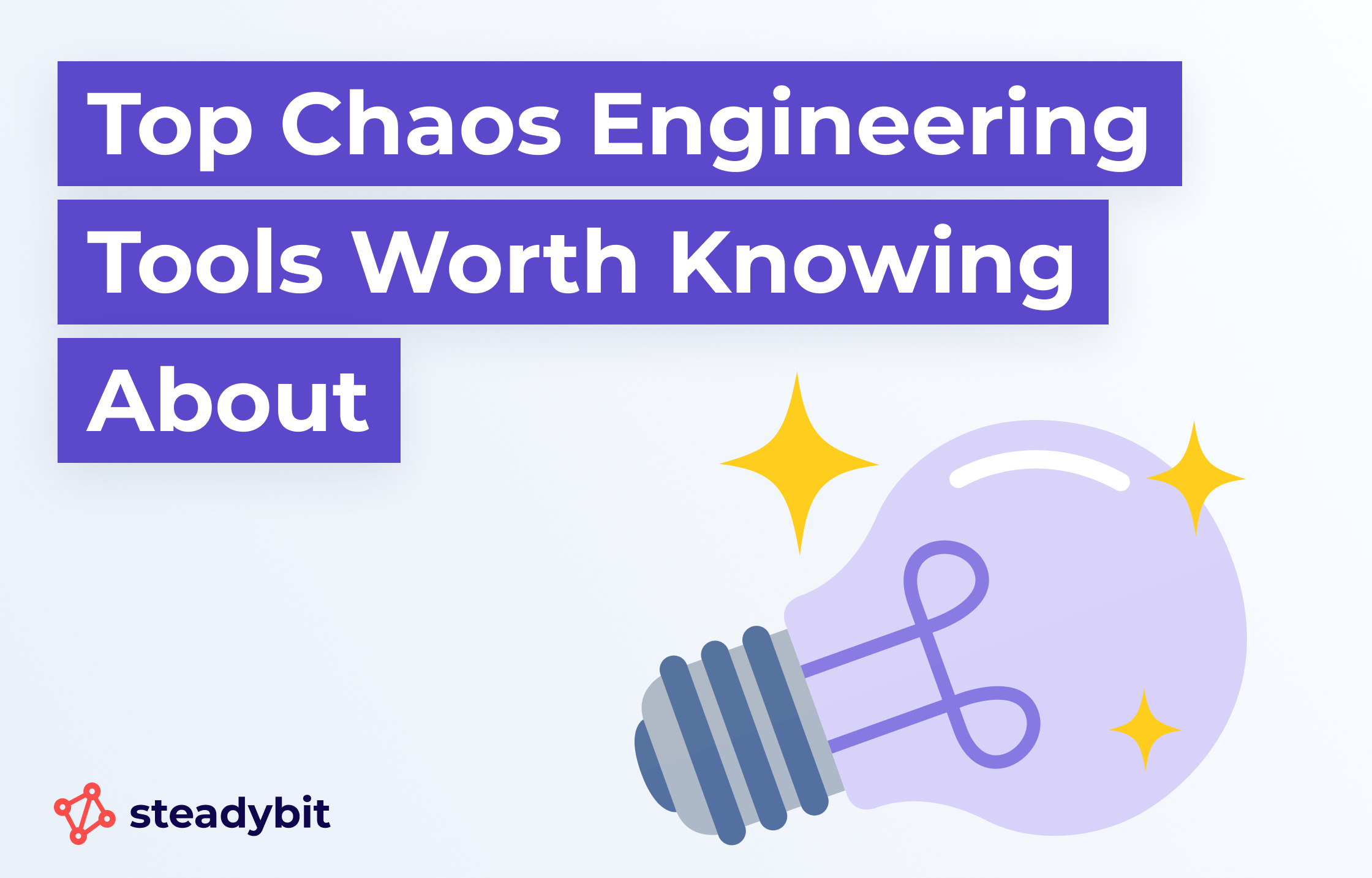Top Chaos Engineering Tools Worth Knowing About (2025 Guide)

Insights from experts – here’s what actually helps
There is no denying that, in 2025, chaos engineering and the tools built for it, have matured. What started as a niche practice is now critical to how modern teams build confidence in distributed systems. But the tooling landscape can still feel noisy. Plenty of options claim to support chaos testing, but not all are built for real teams shipping production code.
Here’s a breakdown of the top tools in the space right now, what they’re good at, and what you should know before you pick one.
1. Steadybit
Resilience testing built for real teams
Steadybit focuses on making chaos engineering practical, repeatable, and safe across distributed systems. It’s designed for platform and reliability teams working in complex, multi-team environments.
- Deep support for cloud, container, and hybrid infrastructure
- Guardrails and permissions built in
- Fast experiment setup with templates and guided flows
- Clear system insights with every test
What makes Steadybit stand out is how it fits into existing workflows. You don’t have to convince your team to learn a new language or switch to a new platform. It works where you already are.
Best for: Engineering teams who want to scale resilience testing without adding friction.
“With Steadybit, we identified issues and corrective measures, improving our overall system resilience. The efficiency of finding these weak spots has vastly increased with Steadybit, and the time to deliver a solution has significantly decreased. We’re moving closer to achieving our target of 99.99% uptime.”
Krishna Palati
Director of Software Engineering
2. ChaosMesh
Kubernetes-native and open source
ChaosMesh is a CNCF open source project focused on injecting faults into Kubernetes environments. It’s powerful but assumes your team is already deep in the K8s ecosystem.
- Pod, network, and I/O fault injection
- Works well with custom controllers and CRDs
- GitOps-friendly configuration model
Best for: SREs running complex Kubernetes clusters who want flexibility and control.
3. LitmusChaos
Framework-based chaos testing for Kubernetes
Litmus comes with a hub of predefined experiments and integrates cleanly with CI/CD pipelines. It’s well suited to teams that want to bake chaos into their daily workflows.
- Chaos experiments as Kubernetes custom resources
- ChaosCenter dashboard for visibility
- Open source with active community support
Best for: DevOps teams that want to bring chaos testing into GitOps or pipeline-driven environments.
4. ToxiProxy
Precise network chaos for developers
ToxiProxy is a low-level open source tool that simulates network conditions between services. It’s often used in development and testing environments to verify behavior under failure.
- Supports latency, bandwidth, packet loss, and more
- Language-agnostic and scriptable
- Ideal for local or controlled test setups
Best for: Developers building fault-tolerant apps who need precise control over traffic behavior.
5. ChaosBlade
Lightweight and CLI-first fault injection
ChaosBlade is Alibaba’s open source chaos tool. It focuses on host-level and container-level fault injection. It’s quick to get running and simple to use.
- Stress tests for CPU, memory, disk, and network
- Works with Docker and Kubernetes
- Minimal setup with a clear CLI interface
Best for: Engineers who want to try chaos testing without setting up a full platform.
6. Gremlin
Enterprise-focused legacy tool
Gremlin was one of the first chaos platforms on the market. It helped shape the category and brought awareness to chaos engineering in production.
- Broad fault library
- SaaS-first with strong documentation
- Limited flexibility in hybrid or modern DevOps setups
Best for: Teams in highly structured enterprise environments with traditional release cycles.
7. AWS FIS
AWS-native chaos for EC2, ECS, and more
FIS is useful if your infrastructure is entirely within AWS and you want to run targeted failure scenarios. It integrates with IAM and CloudWatch, but has limited support outside the AWS ecosystem.
- Deep AWS service integration
- Controlled, scoped experiments
- Limited support for multi-cloud or non-AWS environments
Best for: Teams operating fully inside AWS who want cloud-native testing.
8. Harness Chaos
Part of the Harness CI/CD platform
Harness offers a chaos module that integrates with the broader Harness ecosystem. It’s aimed at enterprise DevOps teams that already use Harness for deployment.
- Built-in experiment templates
- Integrates with Harness pipelines
- Requires buy-in to the Harness platform
Best for: Enterprise teams already using Harness who want a bundled solution.
How to Choose the Right Tool
- If you’re working in Kubernetes, CI/CD pipelines, or hybrid environments, tools like Steadybit, ChaosMesh, and LitmusChaos will give you speed, automation, and control.
- If your infrastructure is fully within AWS, FIS may be the simplest place to start.
- If you’re using the Harness platform already, the built-in chaos module provides a convenient option.
- If you’re in a large organization with formal release processes, Gremlin can be a good fit for structured, controlled experimentation.
Start with where your team is today. The best tool is the one that fits your environment and actually gets used.